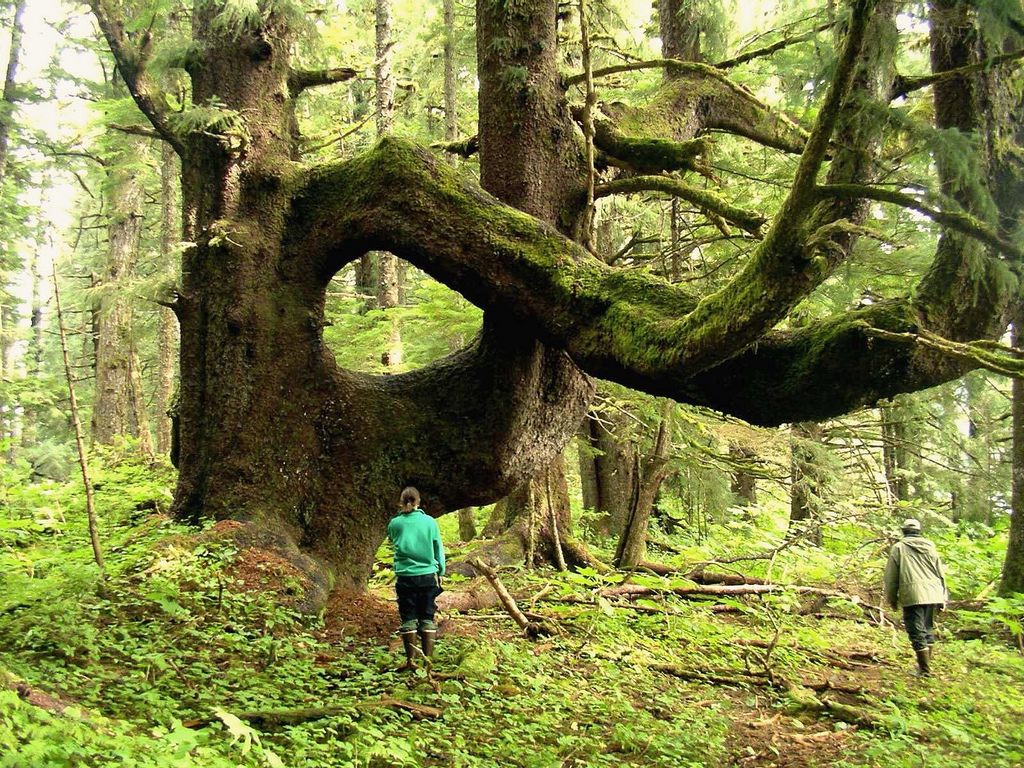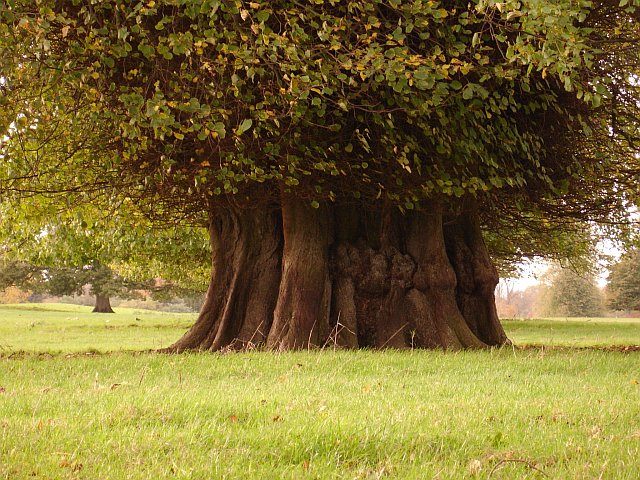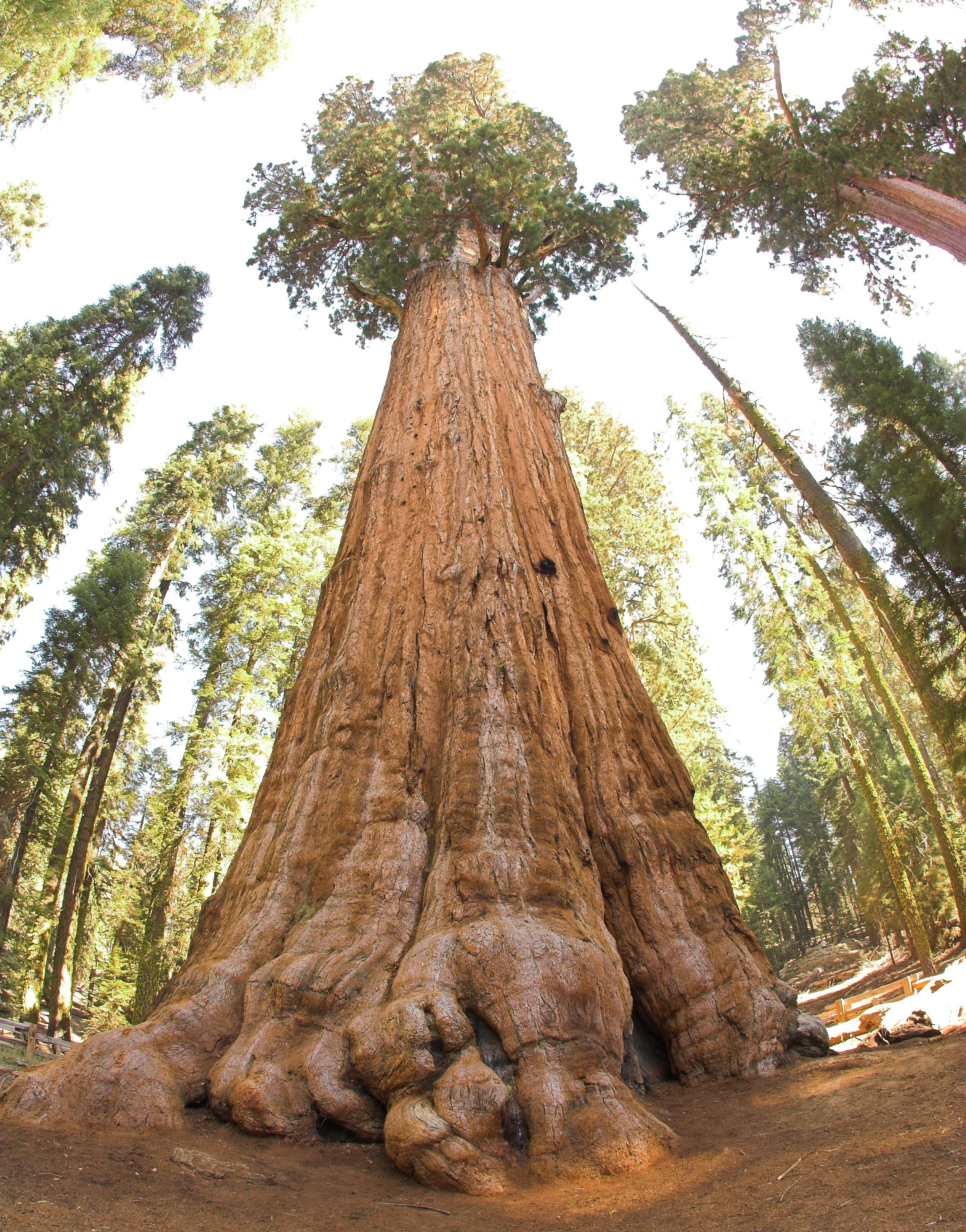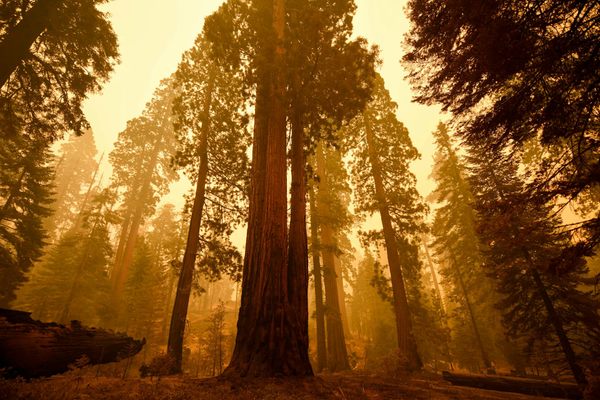The Perks And Pitfalls of Being a Famous Tree

A notable tree in southeast Alaska (Photo: Joseph/Flickr)
To be recognized as a Great Tree, in New York City, is not just a matter of having the correct heritage or coming from the right family.
There’s a certain meritocracy and populism to it, although the Greats do tend to live in some of the most desirable sections of the city—Central Park, Washington Square, Prospect Park, or up in wealthy Riverdale, in the Bronx. Also, it helps to have put down roots here decades, even centuries, ago. But when the New York City Parks Department first listed the city’s Great Trees, in 1986, it recognized all manner of celebrity trees—not just stately old elms and giant oaks, but trees that were associated with Jacob Riis or Boss Tweed or Revolutionary War hangings.
As impressive as New York’s Great Trees might be, there are other ways to measure greatness, too. Champion trees, for instance, are notable for one reason: they are very large, some of the largest known specimens of their species in their country. There’s a list of those, too—a “National Register of Big Trees”—although anyone who wants to find some of these Big Trees may have a hard time: Like human celebrities, the country’s most notable trees can be elusive.
“We try to be very sensitive about where they are,” says Bryant Smith, of American Forests. They don’t want to send flocks of tree-spotters and paparazzi to harass the trees and ruin their lives, so, says Smith, “we don’t post the location data for a lot of these trees.”
For a person, achieving fame or prominence comes with both perks and pitfalls. But what are the advantages of being a celebrated tree? And what are the dangers? While humans have long venerated old and large trees, we’ve also cut them down and razed whole forests of their less superlative brethren. Around the world, tree lovers have compiled lists of the tallest, largest, oldest, most interesting and most charismatic trees—often with the idea that these registries will either help preserve the lives of these extraordinary trees, or help prompt people to take more care of trees in general. But, like human celebrity, it’s not clear that tree celebrity is really good for anyone involved.

(Photo: Unsplash/pixabay)
It’s not just Americans who have compiled a Who’s Who list of their most popular perennials. London’s Great Trees, Hong Kong’s Old, Valuable Trees—OVTs, for short—and New Zealand’s Notable Trees are all roughly equivalent to New York’s list. Australia, Britain, Belgium, Hungary, Poland and Germany all have lists of champion trees, and every year, Europe crowns a Tree of the Year. This year, it’s an oak tree that lives on a soccer field in Estonia.
These celebrity trees usually have a long history. In New York, for instance, Great Trees tend to be old trees. “Usually they’ve been around for many centuries,” says Leslie Day, author of the Field Guide to the Street Trees of New York City. “That makes them venerable. They’re survivors. They’ve survived the changing city, they’ve survived war and fire and drought, and bacteria. They’re strong, and they’re great things of beauty.”
Champion trees earn their place on these lists by earning high scores in formal systems that calculate the size of trees. But size and age aren’t the only qualities that attract people to trees. Other celebrated trees—whether they’re called great trees, notable trees, monument trees, heritage trees or legacy trees—might commemorate a fallen soldier or mark a battlefield. Or they might have been planted by someone special—a head of state, maybe, or a famous author. They might have survived through intense deforestation or been used as a ossuary. They may have an interesting story to tell. Or maybe they are just shaped like a large bird.

A lime tree (Photo: Penny Mayes)
But, for whatever reason they make the list, celebrity trees do tend to be large and old. And that makes them particularly vulnerable. The ecologist David B. Lindenmayer has found that large old trees are often targeted for destruction, either for their wood or because they threaten human safety in densely populated places. Their size and age also makes them particularly valuable to their ecosystem: with their big, small and middle sized branches, their nooks and crannies, their deeply riddled bark, they can provided a multitude of habitats, to plants and animals that would not survive without them.
Protecting these trees, then, can have an outsized impact. And making them into celebrities may be one way to protect them. Some scientists argue that this is one of the best ways to make sure humans take good care of trees—that casting trees as “charismatic megaflora,” the arboreal equivalent of polar bears and snow leopards, could inspire people to conserve those trees’ homes and indirectly benefit many more species. Since trees’ celebrity often depends on their relationship with human society and history, it may be that “framing the conservation of large old trees from a human perspective,” as biologist Malgorzata Blicharska writes, may lead to policies that do better by trees in the long run.
It’s a simple enough idea. “If people value something they will fight or stand up for it,” says Brad Cadwallader, who manages New Zealand’s tree register. “Trees can’t speak for themselves, and unless someone speaks for them they often get pushed aside. The higher the profile a tree has the greater ‘voice’ it has.”

A 600-year-old oak tree in Japan (Photo: Chi King/Flickr)
There are several cases of maturity helping trees survive. In New Zealand, for instance, a large Tasmanian blue gum was set to be removed from Havelock North, a suburb of Hastings—until the town found out that the tree was the second largest of its kind in New Zealand and had been there for as long as the town had.
But these lists have their limits. “One should be cautious not to make it all too ‘narrow,’ not to focus just on individual trees and not to treat other (smaller) trees and other elements of ecosystems seem less important,” says Blicharska. In Auckland, New Zealand, for instance, Sarah Wyse, a research fellow at the University of Auckland, who specializes in forest ecology, and her colleagues looked at what types of trees were actually protected by the notable trees list, and where they were located.
“Really common trees were protected quite well,” she says. “They’re the ones people see and identify with. But really rare plants were not. Vulnerable trees aren’t being protected.” The notable trees list is the main conservation tool Auckland has—and it turns out many of the trees it’s protecting aren’t particularly notable. A significant portion—about 10 percent—were actually recognized weed species. ”It’s better than nothing,” Wyse says. “There are trees that can’t be chopped down. But it’s not quite doing enough at this point.”
And even being on the A-list not always enough. In Hong Kong, for instance, the South China Morning Post found that old, valuable trees were being cut down more frequently since the city had created an official list, due to concerns about disease and public safety.
Marking a tree as something special might be one way of warning other human beings to play nice; it’s an admission that people have dominated the world so thoroughly that if we want these impressive specimens to survive, we need to pay attention to them and protect them. But even when we put trees on a list, we don’t always do a great job of respecting them. And if that’s what happens to our Great Trees… you have to feel bad for the C-list trees, and the anonymous woody biomass that doesn’t make it on any list at all.
 (Photo: Jim Bahn)
(Photo: Jim Bahn)












Follow us on Twitter to get the latest on the world's hidden wonders.
Like us on Facebook to get the latest on the world's hidden wonders.
Follow us on Twitter Like us on Facebook